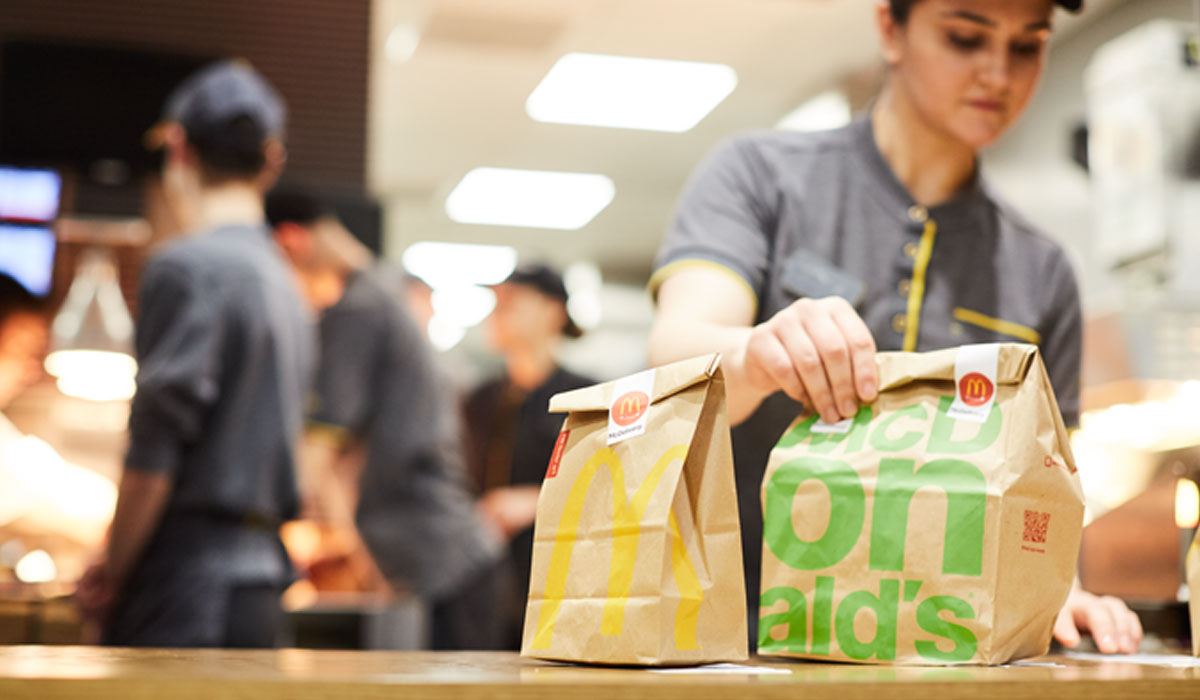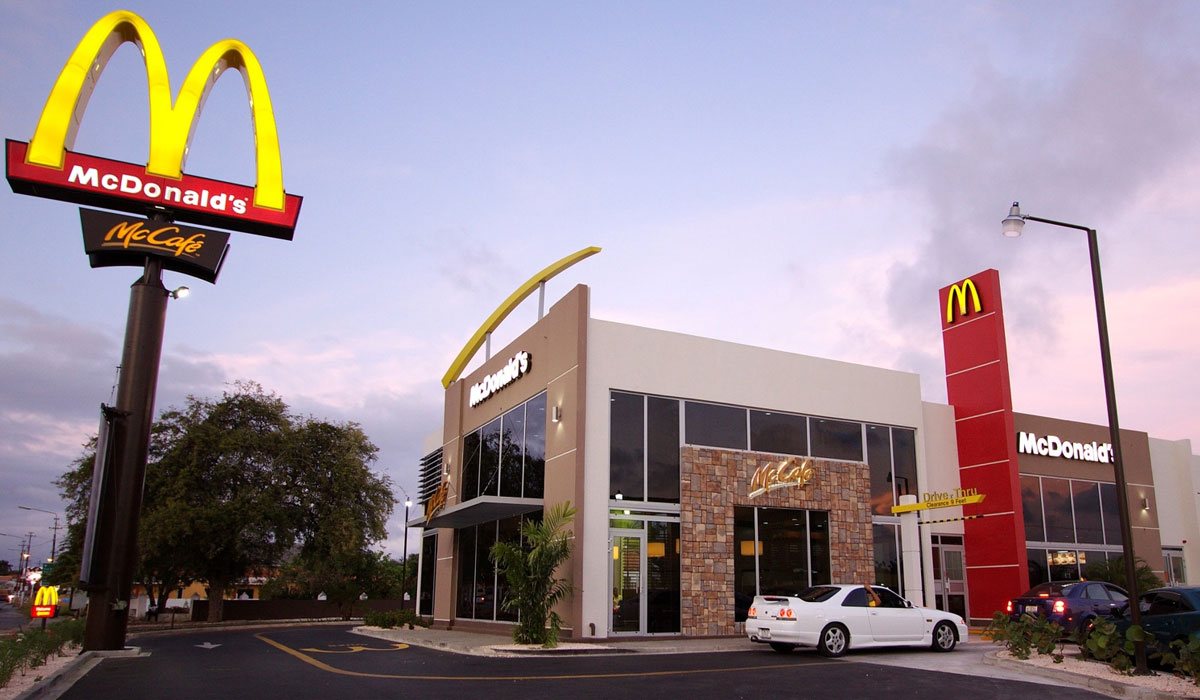When McDonald’s chief executive officer Chris Kempczinski took the reins in November, replacing Steve Easterbrook, he turned to a point of stability. The previous U.S. head told The Wall Street Journal, “There isn’t going to be some radical, strategic shift. The plan is working.”
Kempczinski was specifically speaking to McDonald’s technology efforts over the past two years or so. Easterbrook, removed for demonstrating “poor judgement involving a recent consensual relationship with an employee,” credited tech innovation, or a lack thereof, as a key culprit for why McDonald’s shed guest counts at an alarming rate earlier in the decade—between 2012 and 2017 the company said it dropped a potential 500 million customer transactions to competitors. At the time Easterbrook laid out a plan to reset and rebuild McDonald’s business in May 2015, digital evolution was a serious selling point. This idea that, as Easterbrook put it, “We knew we had to evolve with our changing market and consumer dynamics, and we knew incremental progress wasn’t going to cut it.”
Also, “we were keenly aware that the pace of change inside McDonald’s [was] being eclipsed by the pace of change outside our business.”
To Kempczinski’s point, McDonald’s got back on track in a visible way, from kiosk-forward Experience of the Future stores to AI-driven Dynamic Yield technology at the drive thru. And results wise, McDonald’s had beat Wall Street sales and earnings per share estimates 75 percent of the time over the last 24 months before missing in the third quarter. The chain reported EPS of $2.11 and revenue of $5.4 billion (versus expectations of $2.21 and $5.5 billion, respectively). Still, global same-store sales rose 5.9 percent, year-over-year, as U.S. comps lifted 4.8 percent.
Much of McDonald’s top-line growth in recent quarters stemmed from healthy average check increases. In Q3, it was driven two-thirds by product mix changes and one-third by pricing as domestic prices increased nearly 3 percent. That’s been the story throughout 2019, and traffic remains McDonald’s biggest opportunity.
Yet technology continues to be a critical factor in McDonald’s higher check progress, even as it simplifies its menu in favor of convenience over customization. Delivery, which typically carries a higher check through digital orders, has grown to a $4 billion slice of McDonald’s business, or four times what it was three years ago when the chain wasn’t engaged with aggregators. And new or lapsed users are accounting for a significant portion of the global sales lift, the company said.
One of the main lures of Dynamic Yield’s personalization technology concerns upselling. According to estimates from BTIG analyst Peter Saleh, a 10 percent uptick from upselling would generate roughly 29,587 additional transactions for McDonald’s. If it worked one out of every four times, the figure would be nearly 74,000. At 15 percent, it adds $1.43 per check and additional sales of $63,465. It could eventually generate 130–200 basis points of incremental menu mix, Saleh said.

In sum, the case for more layers of sophisticated tech is not a hard one for McDonald’s to make.
On Wednesday, Kempczinski issued a systemwide message that was also circulated to select media outlets. He told employees he was still in the “listening” phase as “I work with our leaders across the business to determine how we’ll sustain our momentum.”
But then he added this:
“One of the things I’ve heard from all of you is your tremendous excitement about the potential for digital to strengthen and deepen relationships with our customers. Digital is transforming global retail, and it will transform McDonald’s. At the same time, I’ve heard your feedback that we still have more work to do to fulfill our digital potential.”
That thinking led to two announcements Wednesday. Firstly, Daniel Henry, the company’s global chief information officer, will now report directly to Kempczinski.
“Daniel has spearheaded a new product-centric approach to technology with a more agile approach that has my full support, and I believe will yield great dividends for us going forward,” Kempczinski said.
“As the technology team develops and refines these products, however, we must continue to look at everything through the lens of the customer,” he added. “At the same time, we must be cognizant of the development and operating costs associated with technology and ensure there is a compelling business case for both the company and franchisees.”
McDonald’s will now, in turn, take a more holistic approach that drives value from its existing customer-facing digital investments to engage customers and inspire profitable growth, the company said. Does that mean it will scale back spending, perhaps when it comes to buying additional platforms? Hard to guess. However, and this was the second announcement, McDonald’s is creating a new, dedicated “digital customer engagement” team, Kempczinski said. It will also report directly to him.
Lucy Brady is heading up the team in a newly created role of chief digital customer engagement officer. She’s spent the past three years as SVP, corporate strategy and business development with the company, and was part of the team that drove the rapid expansion of McDonald’s delivery business. The Brady-led group also ran point on the $300 million Dynamic Yield deal—something that’s “tangibly driving check growth,” Kempczinski said.
“This new team will develop industry-leading digitally enabled customer experiences and will partner with global technology to build requirements into product roadmaps and technology solutions.” — McDonald’s CEO Chris Kempczinski.
McDonald’s new cross-functional digital team will direct global digital efforts, including ordering, personalization payments, loyalty, and delivery. It’s also partnering with a newly created digital advisory council comprised of McDonald’s USA president Joe Erlinger (who took over for Kempczinski), international president Ian Borden, CFO Kevin Ozan, Henry, and SVP of global marketing Colin Mitchell.
Kempczinski said DAC, as McDonald’s is calling it, would meet quarterly to review progress “and ensure market plans are aligned with our burgeoning digital capabilities.” Additionally, McDonald’s marketing technology arm, led by Bob Rupczynski, and global delivery department will join the DAC team and report to Brady.
“This new team will develop industry-leading digitally enabled customer experiences and will partner with global technology to build requirements into product roadmaps and technology solutions. They will also work with market teams to generate greater value from digital investments and scale work to grow traffic, sales and cash flow through digital channels,” Kempczinski said.
“We have significant competitive advantages in this area thanks to our global scale and customer frequency—with more than 65 million customers visiting us every day around the world,” Brady added in the message. “We’re uniquely positioned to create better experiences for our customers, drive more visits and greater loyalty, and increase sales and cash flow for the system.”
Brady said the DAC team would collect “experts from marketing technology, finance, operations, marketing, insights, analytics and other functions to develop world-class digital experiences including ordering, personalization, payments, loyalty and delivery.”
McDonald’s new team plans to take 90 days to seek input from market teams, key functional groups, franchisees, and supplier partners, she noted. And the company expects to share more detail “on the path forward” in early April.
Dynamic Yield appeared to open the tech floodgates for McDonald’s. In September, the company announced an agreement to acquire Apprente, an early stage leader in voice-based, conversational technology. The 2007-founded platform was expected to allow McDonald’s to provide faster, simple, and more accurate order taking at the drive thru, with the potential to later incorporate into mobile ordering and kiosks.
Notably, though, the Apprente team instantly became the founding members of a fresh, integrated, internal group within McDonald’s global technology team called McD Tech Labs. The brand said then it expected to “grow its presence in Silicon Valley with the hiring of additional engineers, data scientists, and other advanced technology experts to join McD Tech Labs to meet future business needs and support deployment.”
McDonald’s didn’t bring up McD Tech Labs in Wednesday’s letter. Brady’s did, however, stress cohesion across the chain’s system in regards to digital initiatives.
“We will partner closely with market teams to define our overall digital strategy and ensure we maximize value from our efforts,” Brady said. “By working together and pooling our expertise, we can develop better solutions for our customers, deliver greater value and move faster and more efficiently.”
“There are many great examples around the world where our customer-facing digital programs are making a difference and driving impressive results,” she added. “But, we have only scratched the surface of our full potential, especially in our largest markets. The creation of this team will provide greater focus on building a holistic, customer-centered digital vision. It will help us maximize the returns from our digital investments and quickly accelerate our progress.






